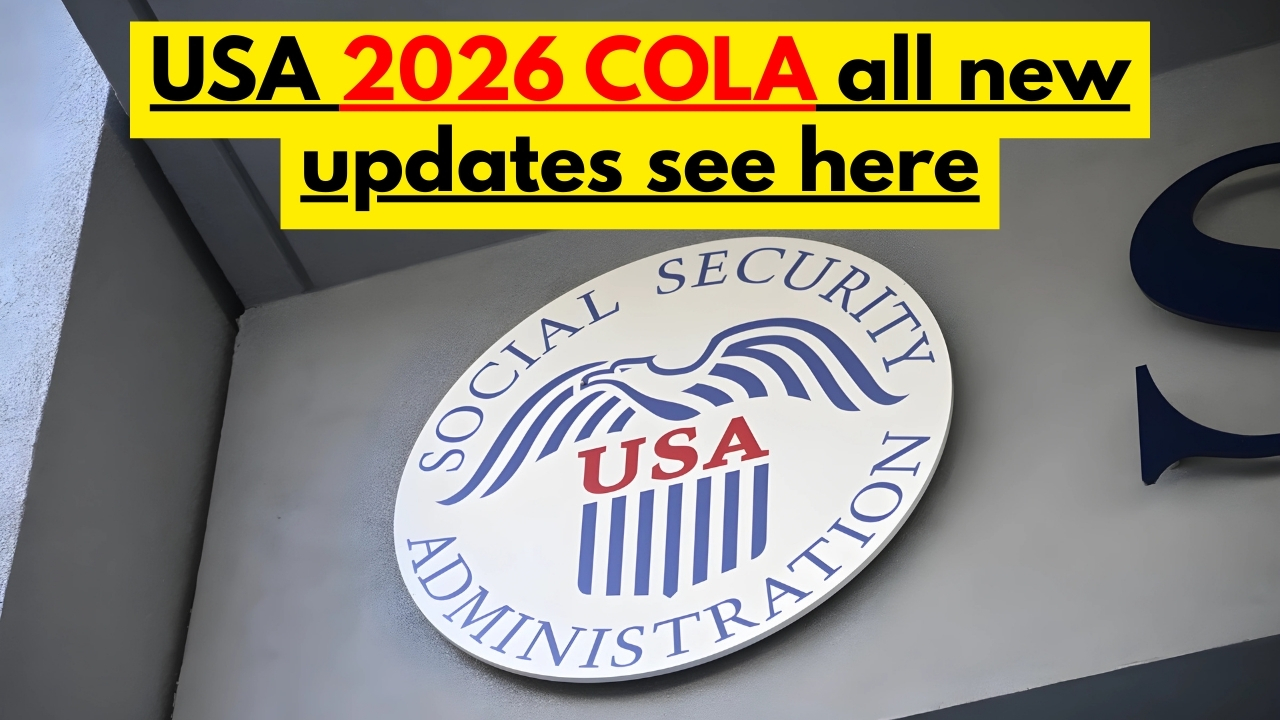USA 2026 COLA : The conversation about 2026’s cost-of-living adjustment has already begun, even though we’re still navigating through 2025. Financial analysts and retirement planners are closely watching inflation indicators, economic trends, and wage growth patterns that will ultimately determine next year’s Social Security increase. While official calculations won’t begin until later this year, early signals suggest beneficiaries should prepare for a different scenario than recent years have delivered.
Current economic conditions paint a complex picture for future adjustments. Inflation has cooled from its recent peaks, but remains stubbornly present in certain sectors. Housing costs continue climbing in many markets, medical expenses show no signs of decreasing, and food prices fluctuate unpredictably. These factors weigh heavily on retirees’ budgets and influence how the government calculates annual benefit increases.
Understanding the 2026 Calculation Timeline
The formal process for determining 2026’s COLA begins in the third quarter of 2025. Social Security administrators will examine the Consumer Price Index for Urban Wage Earners and Clerical Workers from July through September 2025, comparing those figures against the same period in 2024. This three-month snapshot becomes the foundation for millions of beneficiaries’ financial planning.

October 2025 will bring the official announcement, typically released mid-month after September’s inflation data becomes available. The announcement triggers immediate speculation about whether the increase adequately addresses real-world expense growth. History shows that COLA percentages ranging from zero to over 8% are possible, depending on economic conditions during the measurement period.
The actual payment increases won’t appear until January 2026, following Social Security’s standard implementation schedule. December 2025 benefit payments, arriving in January, will reflect the new amounts. SSI recipients typically see their increases slightly earlier, with adjusted payments arriving on December 31, 2025. This staggered timeline gives beneficiaries time to adjust budgets and plan for the coming year.
Factors Influencing Next Year’s Adjustment
Energy prices play an outsized role in COLA calculations, and current volatility makes predictions challenging. Global oil markets, domestic production levels, and seasonal demand patterns all factor into the equation. A particularly harsh winter or scorching summer during the measurement period could significantly impact the final percentage through increased heating and cooling costs.
Healthcare inflation operates on its own trajectory, often outpacing general inflation rates. Medicare Part B premiums typically consume a portion of any COLA increase, sometimes eliminating the benefit entirely for recipients. Medical services, prescription drugs, and insurance costs continue rising faster than overall inflation, creating a persistent squeeze on retiree budgets that COLA attempts to address.
Wage growth throughout the economy influences the index used for calculations. When workers earn more, prices often follow, creating inflationary pressure that feeds into COLA computations. The tight labor market has pushed wages higher in many sectors, though recent cooling might moderate these effects by the measurement period.
Alaska approved $3284 Stimulus Payment – Eligibility details see here
USA 2026 COLA Preparing for Various Scenarios
Smart planning involves considering multiple possibilities for 2026’s adjustment. A modest increase around 2-3% would maintain recent trends but might not keep pace with actual expense growth. A larger increase would provide more breathing room but could signal broader economic challenges. Near-zero adjustments, while unlikely given current conditions, remain possible if deflationary forces emerge.
Beneficiaries should examine their current budgets, identifying areas where costs consistently exceed COLA increases. Healthcare, housing, and transportation often consume larger portions of retiree budgets than the official inflation measures suggest. Understanding these personal inflation rates helps in planning regardless of what 2026’s official adjustment brings.
Financial advisors recommend avoiding major financial commitments based on anticipated COLA increases. The adjustment aims to maintain purchasing power, not increase it. Treating any increase as a buffer against rising costs, rather than extra spending money, helps maintain long-term financial stability throughout retirement years.